Flounces are enormously popular in fashion right now. Balenciaga, Gucci, Givenchy, Giambattista Valli, and Chloe all showed big, exuberant ruffles for spring. I’ve been collecting magazine tear sheets featuring flounces because I think it’s amazing how popular they are right now.
So do you know the difference between a flounce and a ruffle? I think the words are often used synonymously (Wikipedia didn’t know the difference when I searched for “flounce” last week and redirected me to the “ruffle” entry), but they’re actually quite different. A ruffle is usually gathered at the top and the fullness carries through the entire length of the fabric, while a flounce is usually quite smooth at the top and is fuller and wider near the bottom.
Here are examples of both. The Pinwheel Tunic and Slip Dress is made with flounces. So is the Hula Hoop Skirt pattern. Do you see how the Pinwheel skirt stands away from the body mostly near the hem? The top of the flounce is smooth, with no puckers at the seam.
Flounces often remind people of Flamenco dresses because they’re, you know, “flouncy.” The female protagonist in Victorian-era novels usually flounces out of the room at some point, and I always imagine that she’s wearing flounces when she has her little controlled temper tantrum.
The Fairy Tale Dress, on the other hand, has a ruffled skirt that starts out full with gathers at the waist, and that fullness continues all the way to the hem.
Here’s another way to show you the difference. The pattern pieces themselves illustrate this really clearly. The Pinwheel Tunic (flounce) is on the left and the Fairy Tale (ruffle) is on the right. Do you see how the flounce is the same width at the top as the bodice that it attaches to, while the ruffle is much fuller at the top and needs to be gathered?
So obviously if you’re going for full twirl effect you want the flounce. It flares out when you spin and makes more of a circle.
Flounces and ruffles are both great ways to add feminine details to your sewing, and it’s helpful to know which is which, since they can look quite different.
And of course the popular peplum is usually a flounce (but occasionally a ruffle).
Now, who wants to go add a Wikipedia entry on flounces? I heard a news story last week saying that women are much less likely to contribute to Wikipedia . I’ve never done it, but maybe that’s because I’m writing blog posts instead.
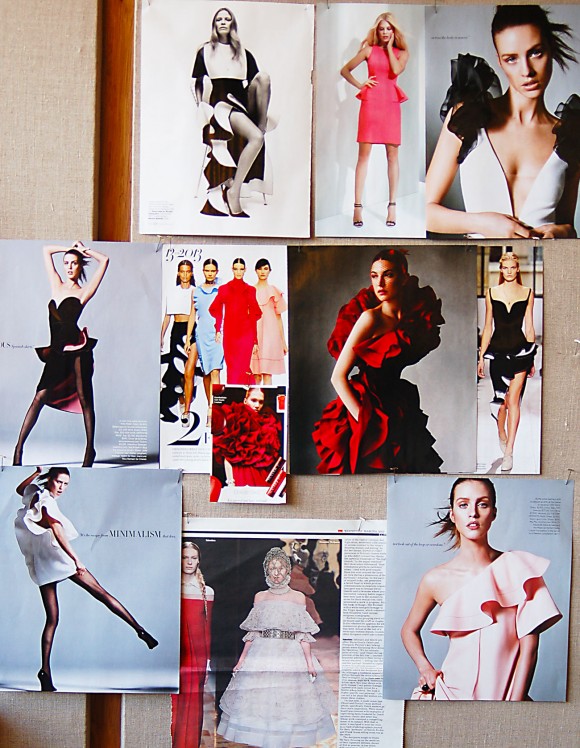
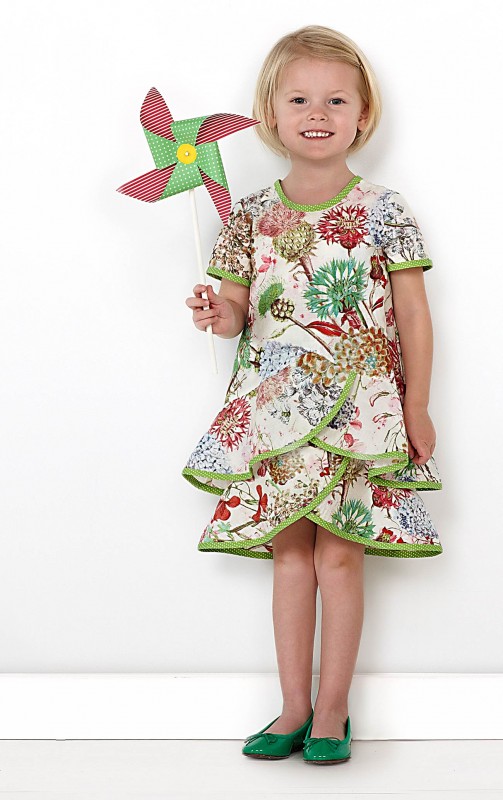
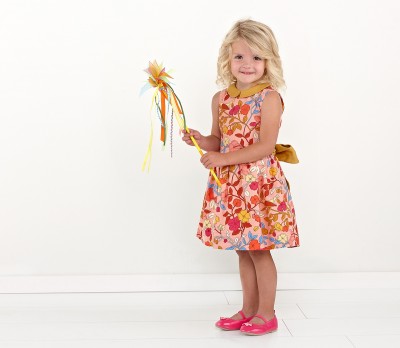
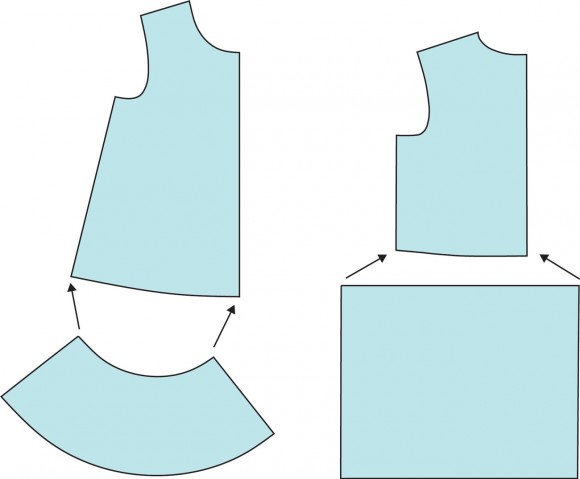
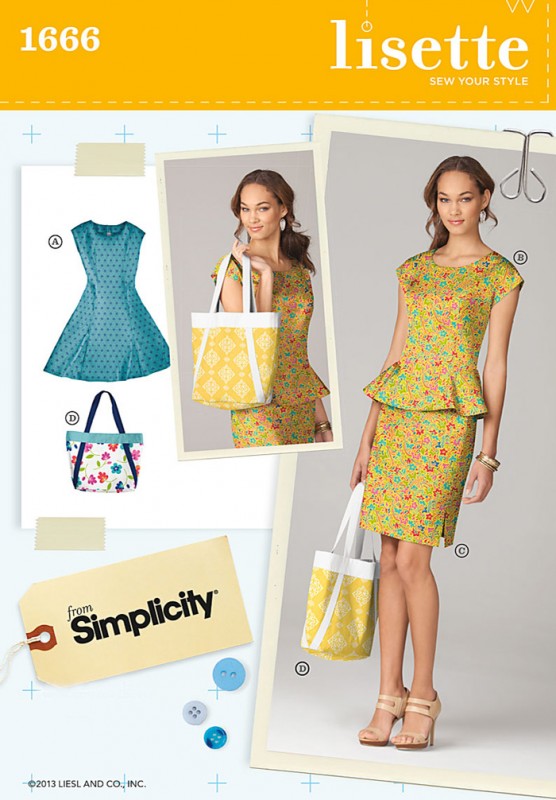
Hmm, maybe I will do that. I already think I know everything, I should tell the world.
I’d much rather read an entry on flounce vs. ruffle written by you, Liesl, than one written by me. And hey look, it’s already done up there — cut and paste — you’re set to go.
I always thought a ruffle was gathered from the straight of grain, and a flounce as you said, was smooth at top and fuller at bottom, and necessarily used the bias of the fabric to achieve this. A straight of grain cut will never drape like a bias cut. True?
Nancy, that’s kind of true, but because a flounce is circular only part of it will be on bias. So yes, bias will drape better, but not all of the flounce will be on bias. You can cut an entire ruffle on bias and get a nice drape, but it will still be gathered at the top. I hope that helps!
Perfectly explained, I think I sort of knew the difference but a lightbulb definitely went off as I read this and it was brought to full clarity in my mind. You should definitely submit this to Wikipedia, they need to know!
I think I called it all a ruffle but now that you explained I can (obviously) see the difference. Thank you for your explanation and illustration really helped.
Thanks for a great blog, you entirely answered my questions about which is which! Nice work!
Thanks for the explanation could you also explain how frills fits into the context of flounce, ruffles and frills
… and ruching
Great explanation
Thankyou
I want to make an Argentinian tango fish tail at the back of the skirt. I want one that starts midway down the skirt and finishes at the hem. Not one that extends from the hemline. It obviously is cut on the bias but much longer than a frill or flounce. I could send you a link of a dancer wearing this type of skirt. Let me know.